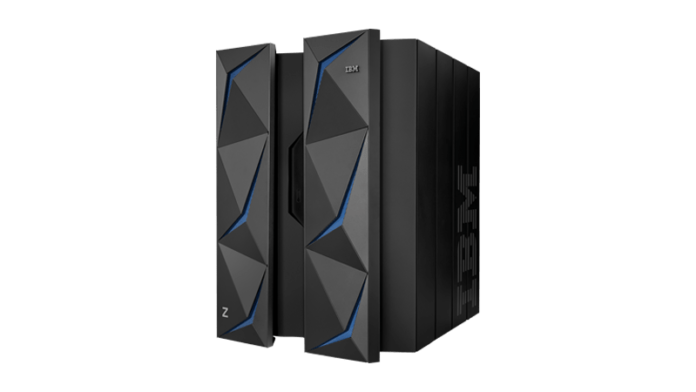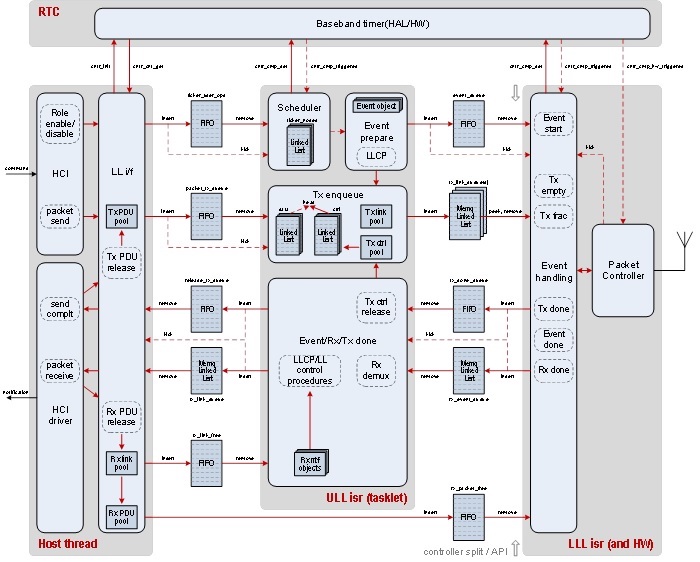The openSUSE’s Open Build Service (OBS) has been picking up the ability to build Windows Subsystem for Linux (WSL) images for those wishing to craft their own WSL distribution or just rebuild openSUSE from source as a reproducible/verifiable build. The complexity with spinning openSUSE WSL images in OBS is the appx files that need to be assembled, which they have relied upon using Microsoft Visual Studio from a Windows machine. But now in making use of the MinGW cross-toolchain they are generating the necessary appx files directly on Linux. (Phoronix)
SAP Embraces Serverless Computing Frameworks
SAP has begun to make available extensions to its cloud platform that enable customers to leverage a framework running on top of Kubernetes to invoke serverless computing frameworks. The framework is based on the open source Kyma project spearheaded by SAP. Thomas Grassl, vice president for developer relations and the SAP Community, says SAP expects developers to make extensive use of serverless computing frameworks running on public clouds to not only dynamically invoke additional compute resources when needed, but also reduce the size of their applications by relying on functions as a service to, for example, run an analytics process. (Container Journal)
Stallman: No radical changes in GNU Project
Richard Stallman has issued a brief statement saying that there will not be any radical changes in the GNU Project’s goals, principles and policies. “I would like to make incremental changes in how some decisions are made, because I won’t be here forever and we need to ready others to make GNU Project decisions when I can no longer do so. But these won’t lead to unbounded or radical changes.” (LWN)
SIOS Offers SAP Certified High Availability And Disaster Recovery For SAP S/4HANA Environments In The Cloud
High availability is critical to many businesses that can’t afford any downtime. They need redundancy built into the applications themselves so that they can automatically recover in a matter of minutes. SIOS specializes in IT Resilience through intelligent application availability. It’s the first provider of Linux clustering services. SIOS recently announced the latest releases of SIOS LifeKeeper 9.4 and SIOS DataKeeper 9.4, at the SAP TechEd event. SIOS integrates with SAP to deliver overall availability protection through automation of setup, monitoring, and failure management within SAP environments. (TFiR)
Plasma 5.17 Beta in openSUSE Tumbleweed
The Beta version of Plasma 5.17 was released with many new features and improvements such as per-screen fractional scaling on Wayland, a new User Interface (UI) for configuring permissions of Thunderbolt devices and network statistics in KSysGuard. The latter requires some more privileges than usual for a user application, so is currently being looked at by the SUSE security team. (openSUSE Blog)
Tails 4.0 Anonymous OS Release Candidate Out Now with Tor Browser 9.0, Linux 5.3
The development team behind the Tails amnesic incognito live system, also known as the Anonymous OS, have announced today the Release Candidate (RC) version of the upcoming Tails 4.0 release. Powered by the latest Linux 5.3.2 kernel, Tails 4.0 Release Candidate is packed with up-to-date technologies to better protect your privacy when surfing the Internet. It comes with the latest alpha version of the upcoming TOR Browser 9.0 anonymous web browser based on Firefox 68.1.0 ESR, as well as the newest Tor 0.4.1.6 release. (Softpedia)
GNOME 3.34 Desktop Gets First Point Release, It’s Now Ready for Mass Adoption
The GNOME Project announced today that the first point release of the latest GNOME 3.34 desktop environment is now available for download with various bug fixes and updated translations. Released last month on September 12th, the GNOME 3.34 “Thessaloniki” desktop environment introduced many new features and enhancements, such as support for custom folders in the application overview, visual refreshes for several apps and the desktop itself, as well as lots of performance improvements. (SoftPedia)
System76 launches two Linux with Comet Lake chips and Coreboot
Linux computer company System76 is updating its laptop lineup with its first two models to ship with 10th-gen Intel Core “Comet Lake” processors. The new 14 inch Galago Pro and 15.6 inch Darter Pro laptops also ship with the open source Coreboot firmware rather than a proprietary BIOS. As Phoronix points out, these laptops still have some Intel proprietary blobs, so it’s probably best to think of them as more open than most laptops rather than computers running 100-percent free and open source software. (Liliputing)
Why Linux Developers Should Reconsider IBM Mainframes
When mainframes were mainstream, many software professionals in the industry today were not even born yet. Mainframe computers have an extensive history, which makes it tempting to call them old, but today’s mainframes are extremely mature, fast, reliable and powerful. In fact, they are critical to the modern economy: Top airlines, banks, insurance companies and health care corporations rely on mainframe computing.
One of the organizations keeping this technology with the times is IBM, with its IBM Z family of mainframe computers. Some of these mainframes—like the 31-bit s390 and, later, the 64-bit s390x architecture—were originally designed and built in the 1960s, and they have continued to evolve and modernize.
“IBM still sells a lot of these even today,” said Elizabeth K. Joseph, a seasoned open source advocate who recently joined IBM as the developer advocate for its Z architectures. These machines run operating systems including z/OS, z/VM, z/VSE and z/TPF, as well as Linux-based distributions like Red Hat Enterprise Linux and SUSE Linux Enterprise Server.
With Linux, mainframes can run modern languages, toolings and CI/CD pipelines. If it runs on Linux, it can run on Z.
Joseph gave one of her favorite examples of running Linux on Z. If someone is using encryption, they don’t have to install any binary blob from IBM to leverage the hardware encryption. It’s just a config file that can be added to openSSL. There are crypto processors on each processor, which give users access to these powerful encryption technologies.
However, mainframes still have an identity crisis. Most people think they don’t belong to the modern world dominated by x86 architectures, virtualizations and containers.
That’s the perception that Joseph is trying to change. One of her goals is to evangelize Z to modern Linux developers.
Why would Linux developers ditch the cloud or the omnipresent x86 platform and embrace Z? Joseph herself is an ideal example of a Linux and open source developer. She got attracted to Z for many different reasons, some technical and some rational.
First and foremost, she says that contrary to popular belief, the AWS cloud can become extremely expensive very quickly. “You can incur monthly bills in hundreds of thousands of dollars,” Joseph said. People have started to look at on-premises architectures as an alternative to AWS. However, they think that x86 is their only choice, which is far from true.
“You can use ARM if you need power efficiency, and you can use Z if you want uncompromised experience. X86 isn’t the only option people have,” she said.
Google made x86 popular; it used to be viewed as a cheap platform that was nonetheless unreliable and inefficient. Joseph recalls a discussion with one of her associates who said that “the world couldn’t survive the growth of these x86 farms.” When she asked whether he meant it was too expensive or bad for the planet, he said, “Both.”
It’s true that this mainframe is not x86. Developers have to port their applications to Z, the same way they port their applications to other architectures like ARM.
However, if you look at processing power, you have these separate, individual machines consuming massive amounts of resources. It’s much more economical and efficient to power and cool one mainframe as compared to thousands of x86 servers.
The same goes for software. Managing software on one mainframe is much more efficient and economical than managing it on thousands of x86 servers to get the same computation power.
The unending Spectre and Meltdown saga has rubbed salt in the wound. These exploits are not going away; it’s a design flaw in modern processors that allows programs to steal the data being processed on the computer. Mitigating these vulnerabilities results in heavy performance penalties.
“There can be exploits for any platform, but a user should not have to suffer heavily,” Joseph said.
She also said that she doesn’t believe in one particular option always being used over another; she thinks people should embrace diversification of architecture.
“If one platform goes down, you should be able to switch to something else without having to suffer any losses,” she said
On top of that, mainframes offer unmatched redundancy, something that’s critical in on-premises setups. “You can pull out the power, and there’s another power. If the CPU dies, there’s another CPU there. You get a storage array of hundreds of drives,” Joseph said. “In fact ‘Z’ stands for ‘zero downtime.’ These machines essentially never go down.”
Together, Z and Linux create a formidable force. They combine the best of the hardware and software worlds, creating an ideal platform to run modern workloads.
As part of her evangelism for Z, Joseph is offering Linux developers with virtual machines a mainframe that they can use for free for four months. “Just ssh into the mainframe and start using it,” she said.
As a developer herself, Joseph believes that a developer should target multiple architectures.
“It makes you a better programmer, as you don’t get so insulated into one platform.”



